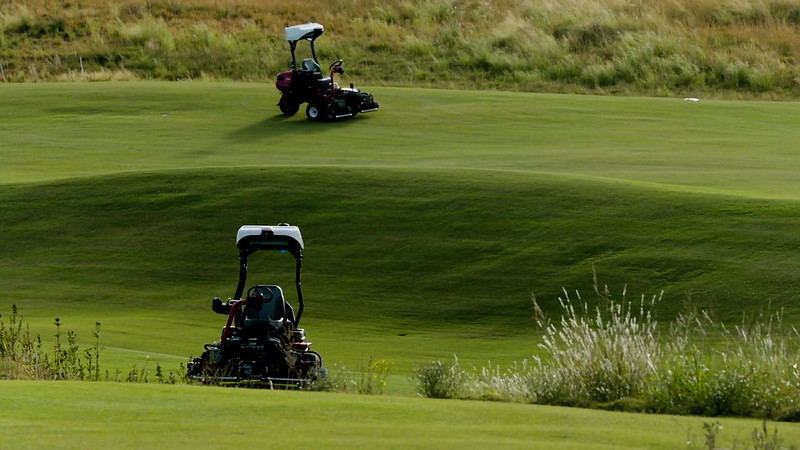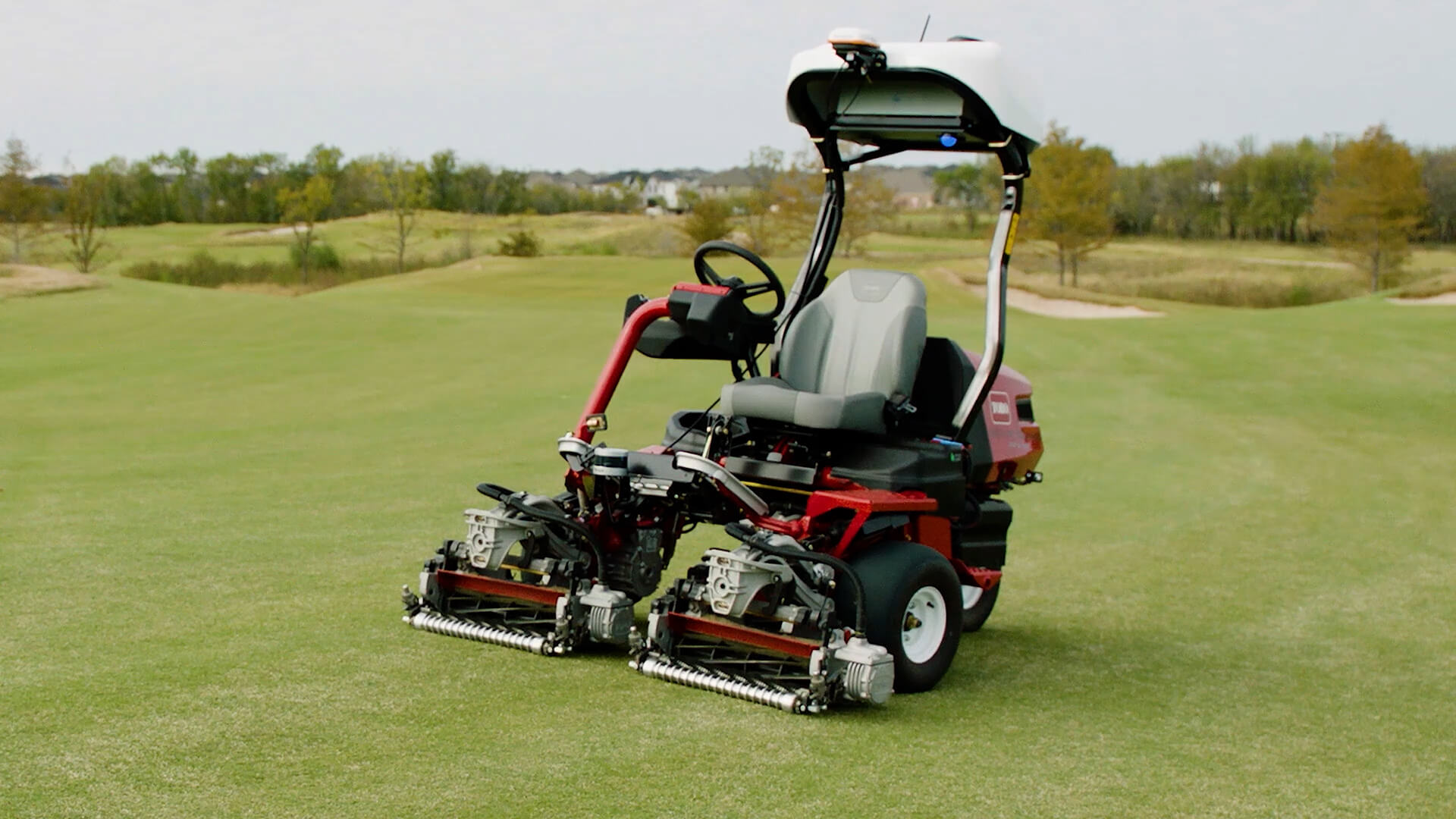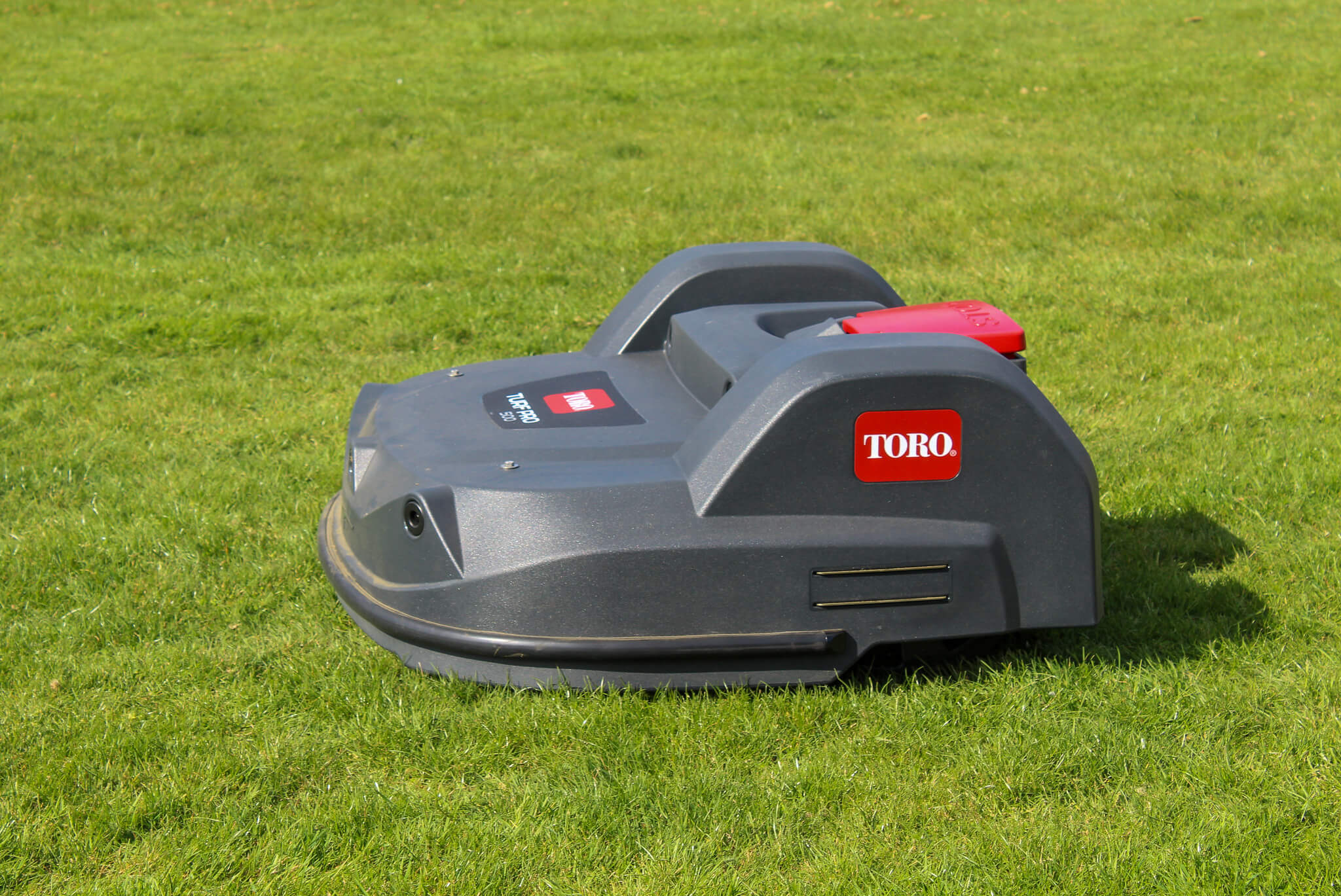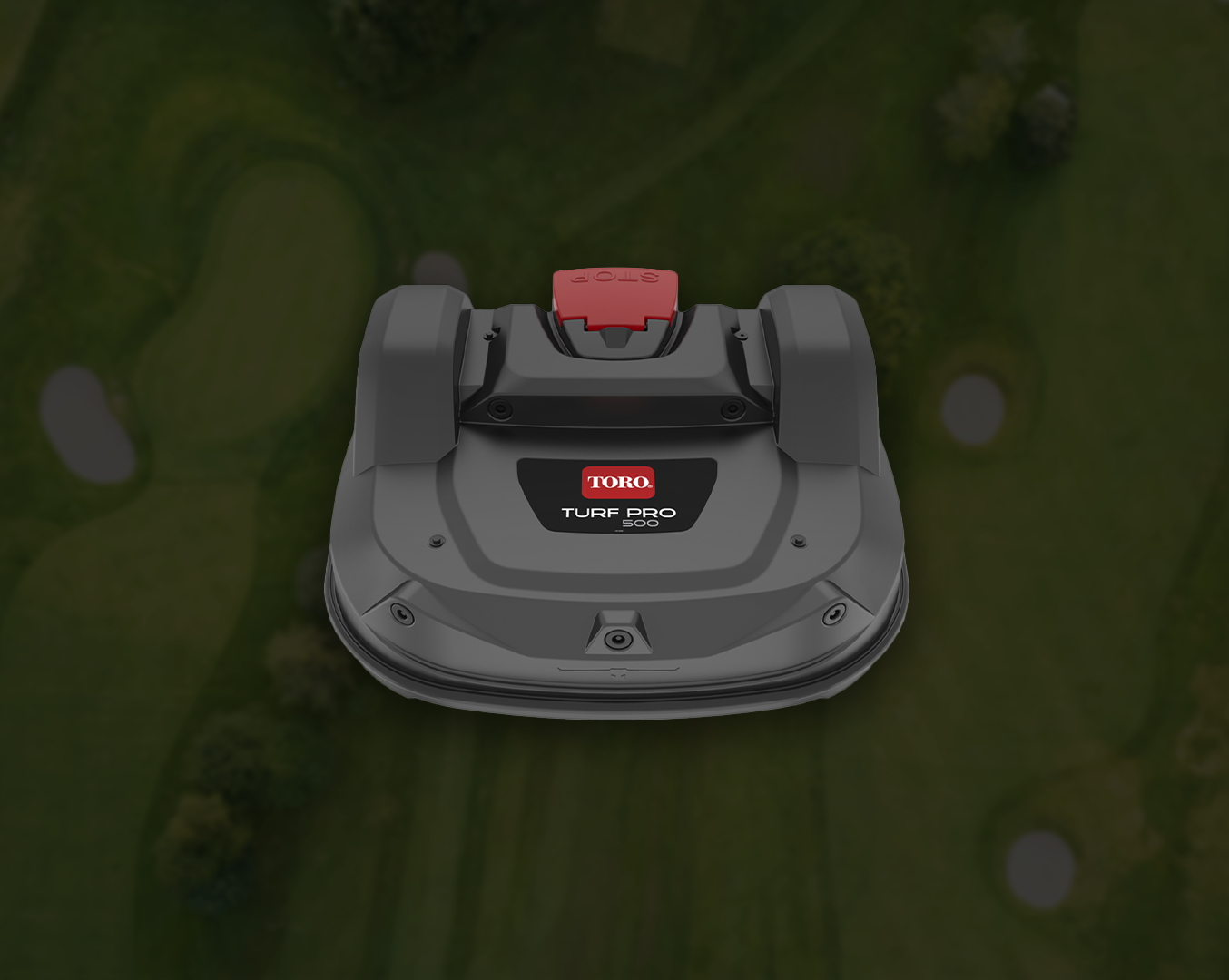Are robotic mowers for golf courses the future of turf maintenance?
Modern golf course management is evolving fast, and autonomous or robotic mowers are seen by many as the next big trend in turfcare.

No longer an abstract concept from the future, these cutting-edge machines are transforming how fairways and roughs are maintained, relieving overburdened teams from time-consuming mowing duties without compromising on cut precision and course aesthetics.
With this transformation happening before our eyes, it’s legitimate to wonder whether robotic mowers are here to stay or are a temporary craze.
In this guide, we’ll offer our perspective – exploring the technology behind robotic mowers, their real-world benefits and drawbacks as well as what course managers should consider before investing in robotic mowing solutions.
What are autonomous and robot mowers?
They are sophisticated mowers relying on satellite positioning, onboard sensors and data-driven software to navigate courses, detect obstacles – such as people, wildlife and equipment – and adapt their path automatically. The latest autonomous machines can handle several acres in a single deployment, working in coordinated fleets to deliver flawless turf consistently.
There isn’t an established, industry-wide distinction between ‘autonomous’ and ‘robotic’ yet. As a rule of thumb, ‘autonomous’ is the broader umbrella term defining all self-driving mowers that, once set up, don’t require human assistance to operate.
‘Robotic mower’ instead often refers to smaller machines that look like robots, like for instance the Toro Turf Pro series, and don’t have the option to be manually driven like the new Greensmaster eTriFlex 3360 with GeoLink Mow.

Toro Greensmaster eTriFlex 3360 with GeoLink Mow

Toro Turf Pro
How do they work, exactly?
In general, autonomous mowers need some form of guidance to know where they’re supposed to operate and where they aren’t.
For older or simpler models this usually entails using physical boundary wires to draw the perimeter of the mowing area. More sophisticated machines instead rely on GPS mapping and RTK (Real Time Kinematic) positioning to mow with precision and easily navigate larger, complex areas.
Special sensors ensure accurate obstacle detection to avoid collisions, allowing these mowers to operate safely even when players are on the course without disrupting the golfing experience.
If you wish to learn more, check out our in-depth article where we answer the most frequently asked questions about Toro’s new autonomous technology.
The impact of autonomous mowers for golf courses
Every time a new technology is poised to revolutionise the way we work, it becomes hard to sift through the surrounding hype and scepticism to envision what the future will actually look like.
So, when it comes to autonomous mowers, how can they affect turf management in golf?
1. Cut precision and consistency
While the cut quality of traditional mowers depends on both machine design and operator skills, autonomous mowing removes human mistakes from the equation.
For instance, Toro’s proprietary GeoLink Solutions technology works with RTK positioning to ensure the route of autonomous mowers is accurate to 2cm, creating repeatable paths to avoid gaps and uneven cuts.
The result is a smooth and consistent turf quality every time, regardless of operator experience – so championship-level fairway mowing can easily become the standard at any golf club.
2. Mow large areas faster
With traditional mowers productivity is limited by variables such as operator skills, mowing speed, cutting width and manoeuvrability.

Robot mowers, however, change the rules of the game, allowing a single greenkeeper to operate multiple machines at once. This way, clubs can mow large areas of the course faster and increase the cutting frequency without having to expand the headcount.
3. Help busy teams do more
Staff shortages and rising labour costs are constant pressures for turf managers. Robotic mowers ease that burden by autonomously completing routine mowing tasks – freeing teams to focus on more important things like irrigation, renovation work, or enhancing the playability and aesthetics of the course.
4. Sustainable and quiet operations
Most autonomous mowers are battery-powered or hybrid, meaning they emit zero or low exhaust emissions, thereby contributing to reducing a golf club’s carbon footprint.
Moreover, they operate quietly, causing less disturbance and minimal disruption to golfers and wildlife – especially in the early morning or evening sessions. No more roar of diesel engines or concerns about noise pollution: just smooth, natural soundscapes.
This also unlocks new possibilities when it comes to mowing fairways, allowing course managers to schedule night-time sessions to maximise operational flexibility and trim the course at the most convenient time.
5. Improved safety
Modern autonomous units are designed to detect and navigate around players, wildlife and golf balls, coming with integrated anti-collision sensors and automatic shut-off protocols.
These safety measures lead to smoother operations, a more pleasurable golfing experience for members and no need to pause mowing during playable hours.
Teams can also enjoy safer working conditions by using autonomous machines to mow around more dangerous areas – for instance, near cliff sides in links courses or by lakes and rivers in parkland clubs.
Common concerns and misconceptions
Along with enthusiastic reports about the benefits of autonomous mowers, there are common concerns around this new technology that are mostly caused by a general lack of familiarity with these machines – or experiences with older robotic models.
Let’s explore a few.
1. Battery limitations and charging logistics
Clubs used to petrol or diesel mowers are understandably worried about the battery life of robot mowers and how charging will affect operations.

While the autonomy of older machines left much to be desired, a model like the Turf Pro 500 can mow up to 18.5 acres (75,000m²) and automatically return to its charging station when it needs a top up – taking only 90 minutes for a full charge.
The important part is to work out your course size, battery replacement and charging infrastructure needs in advance to select the perfect solution for your course.
2. Complex maintenance needs
While operating autonomous mowers requires minimal supervision, some course managers are concerned that these sophisticated machines may also have complex or expensive maintenance needs.
This is far from true. Like any machine, autonomous mowers simply require regular blade changes, firmware updates and occasional system diagnostics – nothing that can’t be easily done or learned with Reesink’s continued support and training.
Additionally, a fleet management solution like Toro Intelli360 can significantly streamline your maintenance programme, giving you real-time and complete vision of your machines’ status to schedule repairs and order new parts before issues arise.
3. “It’s an expensive investment”
Cost is another common concern, with many course managers afraid the upfront investment will be prohibitive. However, this matter is highly subjective, and when you factor in savings on fuel, labour and prevented downtime, autonomous systems can be remarkably cost-effective in the long run.
4. “It will steal people’s jobs”
This is a familiar fear with any form of automation, but the reality is quite different. Autonomous mowers aren’t here to replace greenkeepers: they’re here to empower them.
By taking over repetitive, time-consuming tasks, these machines free up skilled staff to focus on more complex, high-value work. Instead of replacing roles, they help elevate the standard of turfcare across the course.
Autonomous vs traditional mowers: what’s right for your course?
Every course has a unique story and needs. In general, however, golf clubs should weigh several key criteria when comparing autonomous and conventional mowers:
- Cut quality: Autonomous mowers deliver meticulously consistent cuts across golf fairways and roughs, with even striping and crisp edges. Traditional mowers remain superior on greens and tight spaces but can underperform in case of poor operator skills.
- Time and operational efficiency: Quiet autonomous mowers can be used in the late evening or early morning – allowing fairways to recover during the day and offering unmatched flexibility to your operations.
- Cost of ownership: When considering labour savings, fuel usage, reduced downtime and the ability to extract more value from staff time, the ROI of autonomous mowers appears superior.
- Adaptability: Autonomous mowers excel in flat to mildly undulating terrain and handle standard fairway layouts well. Traditional ride-ons and walk-behinds, on the other hand, are still the best solution for complex greens, tight corners or steep slopes.
In most cases, the best real-world solution blends both – using autonomous units for routine fairway mowing and ride-ons or walk-behinds for greens, tight spots or specialist maintenance requirements.
The benefits of Toro’s autonomous range
Not all solutions, however, are created equal. When it comes to turfcare, Toro leads the way for performance, longevity and innovation – and autonomous machines are no exception.
Combining RTK positioning and patented Geolink technology with NTRIP (Networked Transport of RTCM via Internet Protocol), Toro’s autonomous mowers operate within virtual boundaries with unmatched precision, guaranteeing a path accuracy of 2cm and enabling you to easily draw the preferred route for your machines from an intuitive UI.
The autonomous range includes:
- The Greensmaster eTriFlex 3360 with GeoLink Mow: Toro’s autonomous fairways mower delivers the best of both worlds, offering either manual or remote operations thanks to advanced GeoLink technology. And with a 5mph top mowing speed and a height of cut range of 9.5–25.4mm, this machine provides plenty of productivity and versatility for a wide range of tasks.
- The Toro Turf Pro 300: Leveraging GPS and RTK technology, this all-electric robotic mower automates the maintenance of fairways and roughs without compromising on cut quality. It features three cutting heads, maintains up to 11 acres (45,000m²) and offers a cutting height range of 20–100mm – with an optional lower range of 15–90mm.
- The Toro Turf Pro 500/500S: Toro’s most powerful robotic golf mower, the Turf Pro 500, is designed for larger areas and more challenging conditions. With five cutting heads and a mowing capacity of 18.5 acres (75,000m²), it handles wet, long grass and uneven terrain with ease. And for more challenging slopes, the 500S variation is built specifically for gradients up to 24 degrees, offering an extra seven degree capability compared to the standard Turf Pro 500.
- The Toro Range Pro 100: Automating the time-consuming job of collecting driving range balls, this solution can gather more than 15,000 balls in a 24-hour period and stores up to 350 in its hopper at one time. Once full, it returns to its charging station and automatically empties the golf balls into a washing system.
A partner in your autonomous mowing journey
Adopting autonomous mowing is more than a machinery upgrade – it’s a shift in how your course operates. That’s why having the right partner matters just as much as having the right equipment.
Before any installation, Reesink Turfcare works closely with your team to carry out detailed site surveys, identifying potential challenges like raised manhole covers, uneven irrigation heads, or excessive slopes. If needed, we’ll recommend adjustments to ensure smooth, uninterrupted navigation across your mowing areas.
But support doesn’t stop at installation.
As Toro’s exclusive distributor in the UK, Reesink provides:
- Access to genuine Toro parts
- Ongoing technical support
- Comprehensive training courses for greenkeepers and course managers
- Expert advice on course setup, software updates and fleet management
- Integration support for Toro IntelliDash and Intelli360, for full visibility and control of your fleet
We understand that transitioning to autonomous technology can feel daunting. Our role is to make that transition seamless – helping your team get the most from Toro’s advanced systems while supporting you every step of the way.
To learn more speak to a specialist today by calling 01480 226800, or visit www.reesinkturfcare.co.uk.